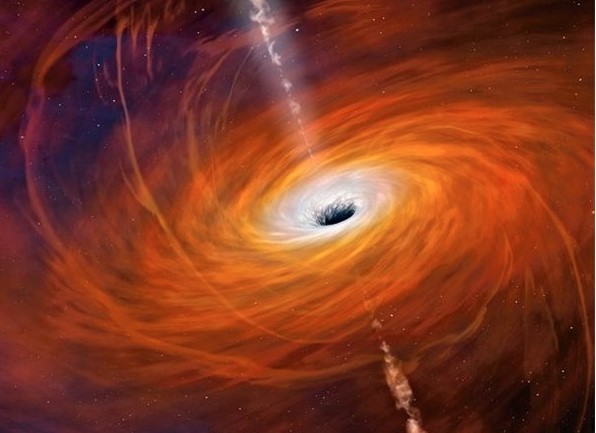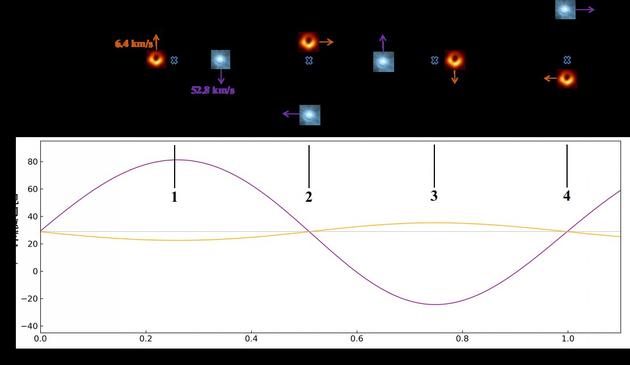Black Hole Catcher Plan Online! LAMOST Discovered the Largest Stellar Black Hole to Date
On November 28, 2019, the top international scientific journal Nature published a major discovery led by Chinese astronomers online. The research team led by researchers Liu Jifeng and Zhang Haotong from the National Astronomical Observatory of the Chinese Academy of Sciences has discovered a stellar black hole with the largest mass so far. This super stellar black hole with a mass of 70 times the solar mass mass far exceeds the upper mass limit predicted by the theory, overturning people's understanding of the formation of stellar black holes, and will certainly promote the innovation of the theory of star evolution and black hole formation.
1、 Cosmic absorber
In his final book "Ten Questions," Hawking wrote, "Facts are sometimes more
wonderful than anything science fiction writers imagine. In 1915, Einstein put forward the general theory of relativity, and the German physicist Karl Schwarzschild deduced an exact solution of Einstein's field equation, indicating the existence of black holes. Since then, humans have never stopped imagining and exploring this mysterious celestial body.
In 1965, Cygnus X-1 became the first black hole candidate to be discovered due to its strong X-ray radiation; In 2015, the first detected gravitational wave provided more specific evidence for the existence of black holes; In 2019, astronomers captured visual evidence of black holes from eight observation points on four continents over a period of 10 years - the first black hole "Fangrong", giving this once "invisible and untouchable" eerie celestial body a hint of affinity. What is a black hole and why have generations of astronomers been so fascinated by it? It does not emit light, and its density is very high (it compresses a star 10 times the mass of the solar mass into a sphere the size of the Beijing Sixth Ring Road, and this density is equivalent to the density of the black hole). It has super attraction. Any matter passing by it, even the fastest light, cannot escape. This mysterious celestial body is a black hole. Therefore, it can be said that black holes are truly cosmic vacuum "absorbers".
According to the different masses of black holes, astronomers roughly divide black holes into stellar black holes (less than 100 times the solar mass), medium mass black holes (100 times -100000 times the solar mass) and supermassive black holes (more than 100000 times the solar mass). Stellar black holes are formed by the death of massive stars and are widely present "inhabitants" in the universe. In the end, if a star has too much mass left (more than 3 times the solar mass), it can neither form a white dwarf nor become a neutron star. Once it enters the death stage, there will be no force to prevent the star from collapsing under the effect of the ultimate gravity, and eventually form a dense black hole. The center of globular cluster and dwarf galaxies may have medium mass black holes, while there are supermassive black holes in the center of galaxies. For example, there is a supermassive black hole about 4 million times the solar mass in the center of the Milky Way.
2、 How to observe stellar level black holes
Black holes are mysterious and interesting, like dragons diving deep into the abyss, hiding their claws and prowling through the universe. If the black hole and a normal star form a close binary system, the black hole will show its ferocious claws and teeth, directly absorb the gas material on the companion star with a strong "appetite", form a accretion disc, and emit bright X-ray light (Figure 1). These X-rays, like the "return light" of these substances before being engulfed by black holes, have become powerful clues for astronomers to trace black holes in the past few years. Then, astronomers will measure the mass of the black hole by monitoring the motion of the companion star, which is applicable to the black hole system of bright companion stars. Another method is for rare double black holes, where scientists mainly listen to the ripples of spacetime through gravitational wave experiments to infer black hole merging events.
So far, almost all stellar black holes in the Milky Way have been identified by the X-rays emitted by their accretion of companion gas. In the past 50 years, people have discovered about 20 black holes with masses between 3 and 20 times the mass of the solar mass by this method.
There are billions of stars in the Milky Way, and according to theoretical predictions, there should be billions of massive dead stellar black holes in the Milky Way. In black hole binary systems, only a small portion can emit X-ray radiation. When a black hole is far away from its companion star, our "Big Stomach King" also exhibits a calm and gentle side. So how to search for these stationary (non accreting companion gas) black holes? Astronomers have provided a completely new answer during the discovery of the largest stellar black hole.
Figure 1 Artistic Imagination of X-rays Ejected from Black Hole Accretion (From Network)
3、 Capture the 'hidden' black hole
The research team led by the National Astronomical Observatory has discovered an anomalous binary system in the vast expanse of stars. Could it contain a hidden black hole? The journey of over 700 days of pursuit is full of hardships and excitement.
At the beginning of 2016, researcher Zhang Haotong, director of LAMOST Scientific Survey Department, and academician Han Zhanwen of Yunnan Astronomical Observatory proposed to use LAMOST to observe the spectrum of double stars and carry out the research plan of double star system, and selected more than 3000 celestial bodies in one Johannes Kepler sky area (K2-0) for spectral monitoring for two years. Among them, a "walking and windy" B-type star has attracted the attention of researchers, exhibiting regular periodic motion and unusual spectral characteristics.
This B-type star spectrum in LAMOST's "eyes" carries very rich information. In addition to obtaining its effective temperature, surface gravity, metal abundance and other important information, there is a near static bright line in the spectrum with the running direction and the reverse phase of the B-type star (H α The launch line adds enough mystery to this star. Researchers suspect that there must be a story behind this B-type star, as it is orbiting around an invisible 'who'? Is it really a black hole! Astronomers never easily let go of any possibility on the path of pursuing the truth of the universe.
In order to further verify the truth behind this special B-type star, researchers immediately applied for 21 observations from the 10.4 meter Ganali Telescope (GTC) in Spain and 7 high-resolution observations from the 10 meter Keck Telescope in the United States to further confirm the properties of the B-type star.
Figure 2: Motion and velocity curves of B-type stars and black holes in the LB-1 system
According to the spectral information, researchers calculated that the metal abundance of type B stars is about 1.2 times the solar abundance, the mass is about 8 times the solar mass, and the age is about 35 million years. Based on B-type stars and H α The ratio of the velocity amplitude of the emission line, the researchers calculated that there is an invisible object with a mass of about 70 times the solar mass in the binary system, which can only be a black hole. The "big boss" behind the B-type star was thus dug up by astronomers, which undoubtedly made people excited and surprised. However, opportunities are always reserved for those who are prepared, and without the "cast net" of the vast sea of stars two years ago, the appearance of this "protagonist" today would not have been possible.
To commemorate LAMOST's contribution to the discovery of this massive stellar black hole, astronomers named the binary system containing the black hole LB-1 (Figure 3). Unlike other known stellar black holes, LB-1 has never been detected in any X-ray observations, and this black hole is relatively far away from its companion star (1.5 times the distance between the Sun and Earth). The researchers observed the source with the Chandra X-ray Observatory of the United States, and found that the newly discovered black hole had very weak accretion to its companion star, making it a "champion" of "calm and mild" stellar black holes.
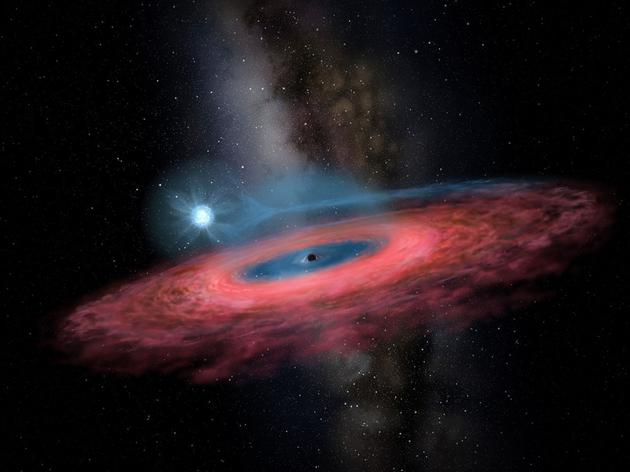
Figure 3: Artistic Imagination of LB-1 (Painted by Yu Jingchuan)
LB-1 is a binary system with quiet X-ray radiation, and it is not feasible to search for such black holes using conventional X-ray methods. For a long time, it has been believed that radial velocity monitoring can detect stationary black hole binaries, and the discovery of the largest mass black hole to date confirms this.
4、 The Past and Present Lives of Black Hole 'Champions'
Since 2015, gravitational wave observation experiments conducted by the Laser Interferometer Gravitational Wave Observatory (LIGO) and the European Virgo Gravitational Wave Observatory (Virgo) have found black holes dozens of times the mass of the solar mass, which are much higher than previously known stellar black holes in the Milky Way.
The 70 times solar mass supermassive black hole discovered by the researchers this time not only reveals that such massive stellar black holes also exist in the Milky Way, but also refreshes our understanding of the upper limit of the mass of stellar black holes (Figure 4).
Researcher Liu Jifeng, the lead author of the paper, said that the general model believed that the massive stellar black holes were mainly formed in the environment with low metal abundance (less than 1/5 of the solar metal abundance), while LB-1 had a B-type star with similar solar metal abundance. At present, the stellar evolution theory predicts that a black hole with a maximum mass of 25 times the solar mass mass can only be formed under the solar metal abundance. Therefore, the mass of the black hole in LB-1 has broken through the "forbidden zone" of the existing stellar evolution theory. This may mean that the theory of stellar evolution forming black holes will be forced to be rewritten, or that some previous mechanism of black hole formation has been overlooked. LIGO Director David. Reitz commented that "the discovery of a black hole 70 times the mass of the solar mass in the Milky Way will force astronomers to rewrite the model for the formation of a stellar mass black hole. This extraordinary achievement, together with the merger of two black holes detected by LIGO and Virgo in the past four years, will promote the revival of black hole astrophysics research".
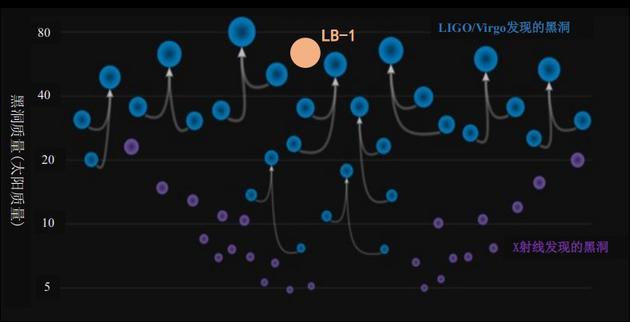
Fig. 4 LB-1 and gravitational wave merging events, Mass distribution of black holes discovered by X-ray method
Another possibility is that the black hole in LB-1 may not have been formed by the collapse of a star. Researchers speculate that LB-1 was originally a three-body system, with the observed B-type star located in its outermost orbit and being the least massive component, while the current black hole is formed by the merger of two black holes formed by the initial internal binary stars. In this case, the system will be an excellent candidate for black hole merging events and provide a unique laboratory for studying the formation of double black holes in a three body system.
5、 The mutual achievements of the "King of Spectra" and the "King of Black Holes"
The discovery of this "King of Black Holes" fully confirms the powerful spectral acquisition ability of the LAMOST telescope. LAMOST has 4000 eyes (4000 optical fibers) and can observe nearly 4000 celestial bodies at once. In March 2019, LAMOST publicly released 11.25 million spectra, becoming the world's first spectral survey project to exceed 10 million, and is hailed by astronomers as the "King of Spectra" with the highest spectral acquisition rate in the world (Figure 5).
Advanced equipment promotes new discoveries. In this study, China's independently developed LAMOST played an irreplaceable role. Since November 2016, in order to discover and study spectral binaries, researchers have used LAMOST to make 26 observations of more than 3000 stars in a Johannes Kepler sky area over two years, and the cumulative exposure time is about 40 hours. If a regular four meter telescope is used specifically to search for such a black hole (observed 365 days a year and 8 hours a day), with the same probability, it would take 40 years! This fully demonstrates the extremely high observation efficiency of LAMOST!
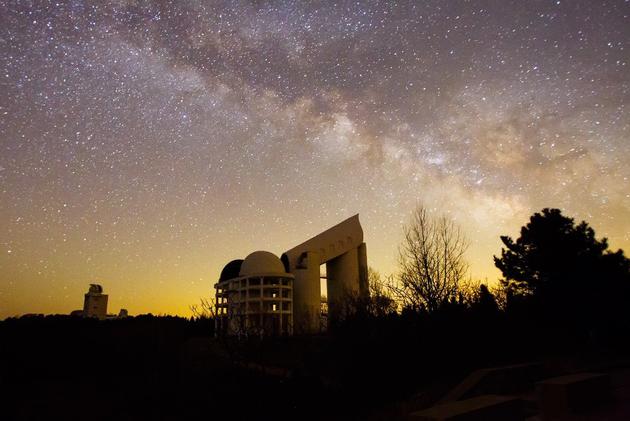
Figure 5 LAMOST Telescope and Starry Sky (Image courtesy of the National Astronomical Observatory)
If you want to do something well, you must first sharpen your tools. LAMOST, an "astronomical tool," has helped astronomers discover today's protagonist, the "King of Black Holes," and the appearance of the "King of Black Holes," has also added more excitement to LAMOST, the "King of Spectra.
This stellar black hole, which has the largest mass to date, is also the first black hole discovered by LAMOST. Its appearance will mark the arrival of a new era of using LAMOST's celestial survey advantages to search for black holes. I believe that the mutual achievements of the "King of Spectra" and the "King of Black Holes" will become a popular story in the astronomical community.
Please specify source if reproducedBlack Hole Catcher Plan Online! LAMOST Discovered the Largest Stellar Black Hole to Date | SCISOON

